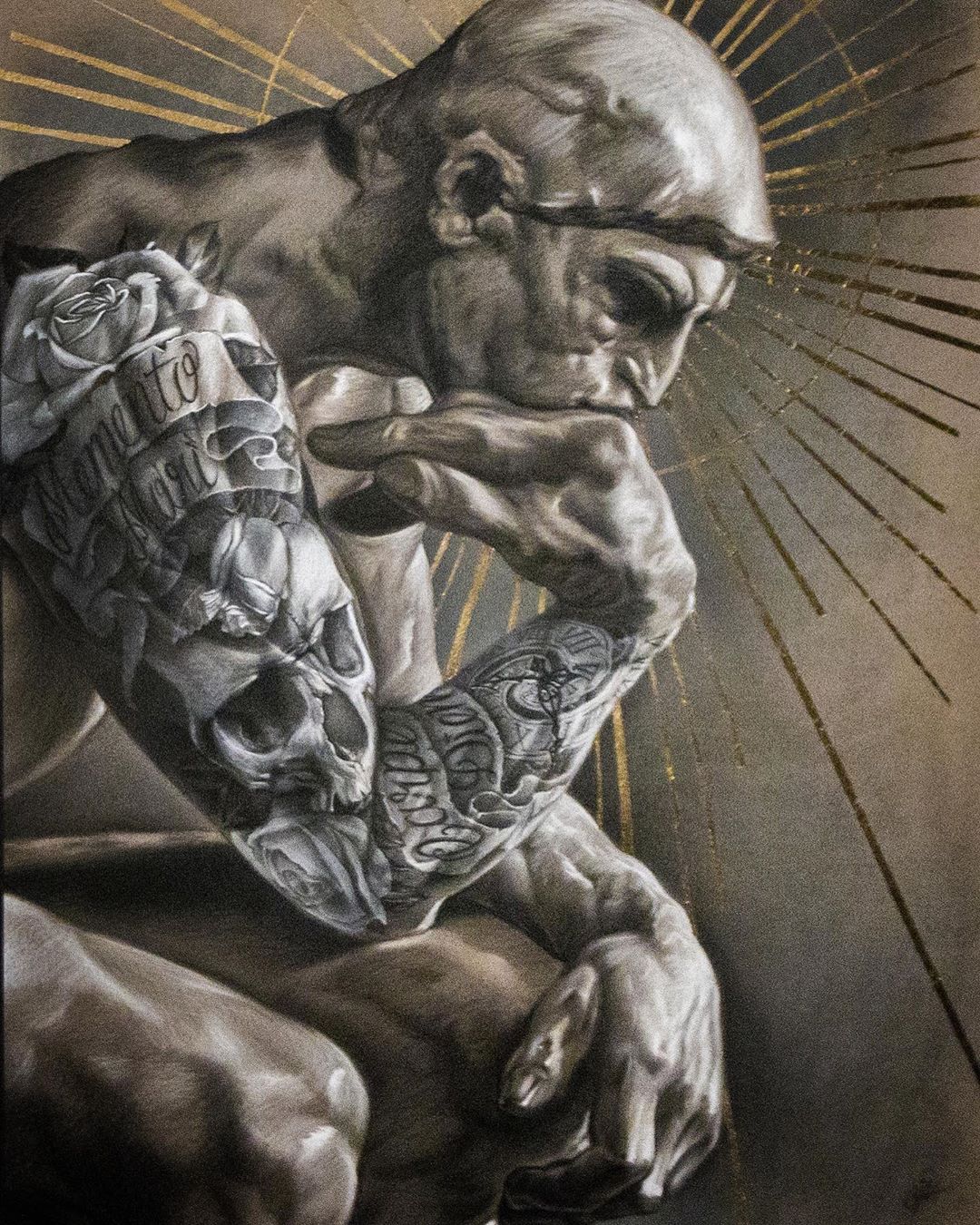Beroana (Shell money) I
2015 - Sculpture (Sculpture)
Variable dimensions
Taloi Havini
Following her family’s political exile to Australia in 1990, Havini began to document her journey’s home to the north of Buka Island, in the Autonomous Region of Bougainville. Reflecting on the still visible aftermath of conflict and changing economic factors, Havini creates traditional beroana or shell money from extracted earth materials only found on Solomon islands like Bougainville. Havini’s whirling assemblage of ceramic discs emulate the strings of shell money (still valid around the Pacific as system of payments) to examine the economic changes that occurred in her homeland. Additionally, the beroana are stored in marae tsuhana, sacred storage vessels, suspended high in secret keeping places. The freely suspended, copious lengths of beroana that Havini has created resonate with the Indigenous Bougainvillean conceptions of land and water spaces as the sacred skin of the people. She invites the viewer to access the sacred space enveloping and protecting Indigenous knowledges in the form of the beroana. In so doing, Havini alludes to unbridled possibility in the years to come for Bougainville, and for all Indigenous peoples whose cultural practices are arrested by aggressive mining activities on their sacred skin/land.
From the Nakas clan, Hakö people, interdisciplinary artist Taloi Havini was raised in Arawa, Autonomous Region of Bougainville. Working with ceramics, photography, print, video and mixed media installation, Havini’s considered approach to art-making responds to the tensions and aftermath of the German plantations, Australian colonial mining pressures, and the deadly Bougainville conflict around Indigenous land rights and independence of the 1990s. The youngest child of political activist parents, Havini migrated to Australia at the height of the war.
Colors:
Related works sharing similar palette
» see more
Related works found in the same semantic group
» see more

© » HYPERALLERGIC
Remembering Indigenous Artist and Organizer Klee Benally Skip to content In 2011, Klee Benally and his wife Princess Benally collaborated with artist Chip Thomas on a public art project in Downtown Flagstaff featuring the two gazing at each other with the words “What we do to the mountain, we do to ourselves.” (image courtesy Chip Thomas) chip thomas In 2011, Klee Benally and his wife Princess Benally collaborated with artist Chip Thomas on a public art project in Downtown Flagstaff featuring the two gazing at each other with the words “What we do to the mountain, we do to ourselves.” (image courtesy Chip Thomas) chip thomas In 2011, Klee Benally and his wife Princess Benally collaborated with artist Chip Thomas on a public art project in Downtown Flagstaff featuring the two gazing at each other with the words “What we do to the mountain, we do to ourselves.” (image courtesy Chip Thomas) chip thomas PHOENIX — Multiple communities are mourning the loss of Klee Benally, an anti-colonial Indigenous activist, installation artist, filmmaker, and musician whose work centered around land rights, Indigenous liberation, and climate justice...

© » KADIST
Claudia Martínez Garay
2019escenario chacana by Claudia Martínez Garay is a sculptural work composed of a frame-like structure that contains a series of ceramic pieces...

© » KADIST
Chloé Quenum
2017The stained glass windows of Chloé Quenum’s Les Allégories evoke the sacred and describe the movement of a rooster in the form of patterns extracted from a wax fabric found in Benin...

© » KADIST
Newell Harry
2015(Untitled) Nimoa and Me: Kiriwina Notations by Newell Harry brings together a litany of contemporary politics—mobilization around enduring racism, the legacies of Indigenous and independence struggle, and the prospects of global solidarity against neocolonialism and social injustice...




